Actors Make or Break Your Haunt Experience, so You Need to Take Care of Them.
This episode, which is based on the third episode of my A Scott in the Dark podcast, is on the care and feeding of haunt actors. I want to first say that, so far, this podcast has been enthusiastically received. One of my favorite comments after the last episode was, “I’d listen to Scott read anything, even the phone book.” I was like, “Well, that’s a lovely comment.” So, in the next episode, I’ll be reading the Tampa phone book from A through F. Just kidding.
Another person asked, “Will you ever have guests from the haunt industry on your podcast?” No, absolutely not. It’s just going to be me. Of course, I will. I have a couple of people in mind that I’d like to have on and, when I visit haunt trade shows, conventions, and that sort of thing, I’ll take my laptop, my microphone, my test cam, and try to catch as many folks as possible.
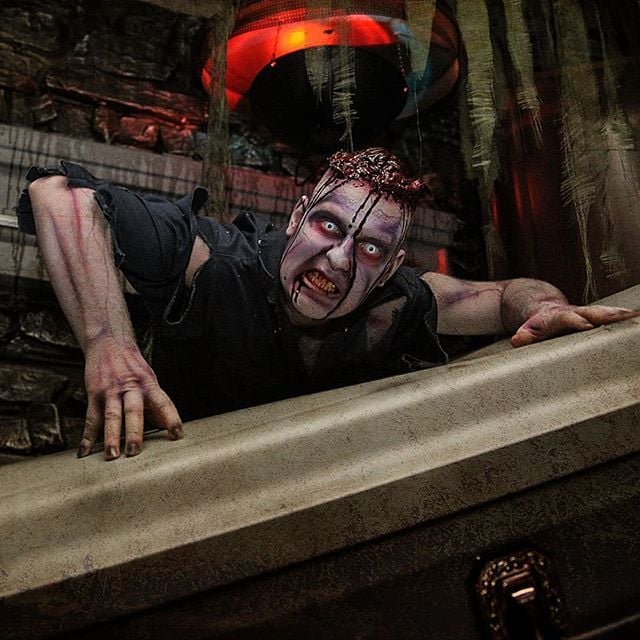
Actors are the Lifeblood of Any Haunted Attraction
So, on to the topic of this podcast—the care and feeding of actors. I know that sounds condescending, but it’s not. My background is in acting. I have a theater degree from Northern Illinois University with an emphasis on acting and directing. Actors are the lifeblood of any haunted attraction. One haunter said to me, “Give me a cast of great actors and a candle, and I’ll scare the crap out of you.” I love that. I’m a firm believer that actors either make or break your haunted experience. You can have the coolest sets, the coolest lighting, the coolest special effects, and the coolest animatronics, but, if you have lackluster actors or not enough actors, your haunted attraction is going to be lifeless.
I want to share with you my views, what I’ve seen work, and things I’ve thought about trying but never have. First, I want to share a quote from screenwriter and film director Todd Solondz, who directed one of my favorite movies, The Doll House, and did work on Dark Horse, which I think he also wrote and directed. He says, “Casting is everything. If you get the right people, they make you look good.” If you’re a haunt owner and you have a crappy cast, you can yell at them as much as you want, but the fact is, they reflect you. You need to make every effort to make them good, because, if they screw up, the only person to blame is you. You didn’t give them clear enough instruction, you didn’t get the right people, or you didn’t keep a good enough eye on them. I’m not saying this to be hard on haunt owners. I say it to myself, too. If the actors in my haunt flop, it’s my fault, so, I try to find the best people I possibly can.
Know What You’re Looking For
Before you start looking for haunt actors, it’s important to know what it is you’re looking for. As far as I’m concerned, there are basically two kinds of actors. One of them is what I call a character actor. These are people who can sustain characters for long periods of time and basically live as the character throughout the course of the night. The other kind of actor is what I call startlers. These are the folks who can scream like a crazy person all night long and not lose their voice. I don’t know how they do that, I really don’t. You have to understand the story you’re telling to figure out how many of each of those you need. I think most haunts need both kinds—if nothing else, you need some great queue actors. Once you get inside, you can do nothing but startles, which is fine. There’s nothing wrong with that at all. I’ve seen that done very, very well.
You also have to figure out how much exposition you have to communicate, how much backstory you have to communicate. If you’ve got a lot of that to do, you’re going to need more and more of those character actors and fewer startlers. Let me clarify—a character actor can do a startle as well, so you have to decide how many of those you need. Then, when you’re looking at your cast list, make a notation—S for Startler, and C for Character. This helps you during the casting process to figure out how many of which you’re looking for.
Before you start casting, you also have to take into consideration whether you’re looking for stamina or looking for style. Now, of course, you’re going to say, “I want both.” Well, you’re going to have a huge challenge in casting, because stamina is something you can do if you’ve got really seasoned pros, and they’ll still have style while they’re doing it. Other folks get tired and unfocused. I’m sure none of you have ever walked around a corner of your haunt and seen one of your actors on their cellphone. There’s nothing worse than seeing a werewolf on a cellphone. It just kinda blows everything out of the water, doesn’t it?
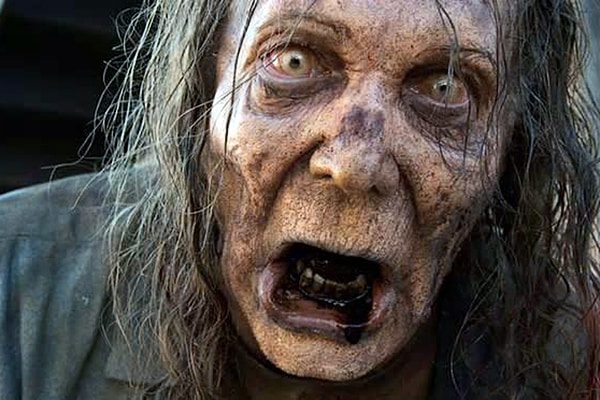
Consider Double Casting
As the haunt owner and perhaps casting person, you’ll have to decide if you want to give actors breaks or have them go full-tilt boogie for four to eight hours at night. If so, hire 14-year-olds and have lots of sugar and Coke backstage—I mean the soda. Or you might want to consider double casting. If you’re able to make it so the performers have 30 minutes on and 30 minutes off, and you double cast, you can keep everything running smoothly nonstop. This is tough to do if you’re already having trouble finding people, but, if you can do it, you’ll have the freshest actors out there all the time, and you can expect more from them.
Another option is to have a full cast with breaks and include swings, which are actors who can go through and do break schedules. For example, Swing A covers the first five positions, rotates through them, and then takes a break. In the Vault of Souls, we have actors that are in the same rooms as five different characters, and that works really well.
Be prepared for people who’ll lose their voices, get tired, or won’t make it back for the third weekend because they find haunt acting is a lot harder than they thought it would be. Take these things into consideration when you’re casting, because you may discover you need 40 actors rather than 20. You want them to be high-energy, absolutely brilliant in every single moment, and make it through the full run, so you’re going to have to double cast. If you open the last week of September, as many haunts do, everyone is super high-energy and excited the first weekend. The guests are pounding down the door, because it’s the beginning of the haunt season. Then, you go through the doldrums, which is usually the second and third weekend until you get to the second weekend in October, when it starts to ramp up again. By the time you get to the weekend before Halloween, in many cases, you’ll have lost a significant number of your cast. If you haven’t, congratulations. That means you’re doing everything absolutely right. We’re going to talk a little bit later about how to retain actors.
So, decide up front if you want to double cast, what break schedule you want, and what you’re looking for, and find a balance in all of that.
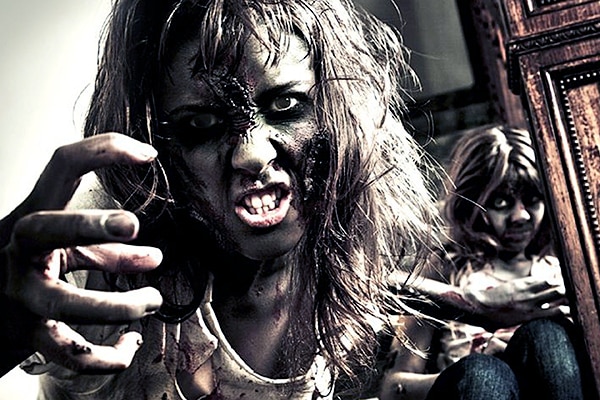
Every Performer Needs Compensation, but that Doesn’t Have to Be Money
Every performer needs to be compensated in some way. Now, when I say compensation, that doesn’t necessarily mean money. If you can pay your actors, great. If you can say, “We’ll give you 2% of the profit,” do that. I haven’t talked to many haunts that have tried profit sharing, and I think the reason is, when most haunts first start out, the first part of that phrase doesn’t exist. They’re more than willing to share, but there’s not a lot of profit. If you can profit share, that means you’re paying with money you’ve already made. I like to say we’re paying actors with the guests’ money, not your money. It also encourages your actors to market for you, to promote your haunt. The more people they can get to come to the haunt, the more money they’ll end up making in the long run.
You can also pay people in experience, especially if you’re a volunteer haunt. You can give them acting training classes and makeup training classes. I know one place that does this instead of paying actors for rehearsals. They say, “After you take this haunt acting class (which is essentially the rehearsal process), we’ll give you this makeup training class, and you have to take this safety training class. After you’ve completed all those, we’ll start paying when the event opens.”
Another way to keep your actors coming back is to make sure they always have cold water, some sort of snack, and, if you build the right dynamic into your cast, your cast will bring in food as well. Some break rooms look like a buffet or family picnic. You can reinforce actors’ participation by letting them know there will be pizza every night. You might be able to get those donated if you’re a volunteer haunt or a haunt trying to raise money for a good cause. You might be able to go to your local pizza restaurant and say, “If you provide us with pizzas every night for our cast, we’ll put your name on our tickets.” Feeding your actors is definitely a form of compensation.
Another great compensation is recognition. This is something I like to do wherever I can. In one haunt, I had buttons printed up that said, “I Scared Scott.” If I went through the haunted attraction and saw an actor going above and beyond, they’d get one of these buttons. The second year, we added what we called Gold Coins, which were redeemable for some amount of cash, and these were used as rewards as well. I discovered that the majority of performers would rather have the button that said, “I Scared Scott,” than the coin that was good for $10 cash. The button cost me 22 cents or something like that.
Haunt actors are a wonderful and odd group of people, and they love to be recognized when they do a good job. If they wanted to make tons and tons of money doing anything else, they’d probably be doing it. Haunt acting is the hardest job you’ll ever miss when it’s over. You’ll sweat like you’ve never sweated before, you’ll hurt in places you didn’t know you had places, and you’ll want to come back the next night. Giving recognition for that kind of commitment is indeed a form of compensation.
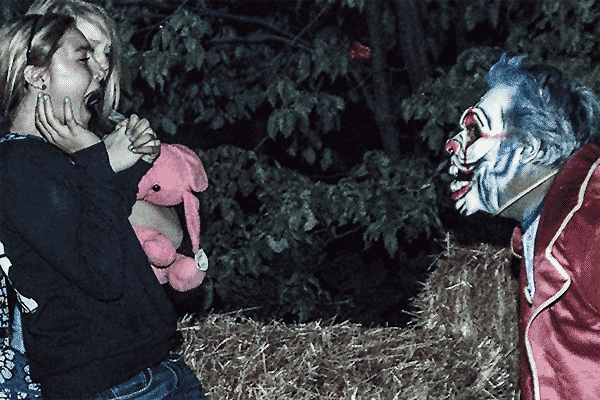
Don’t Ignore the Small Print
A most important thing to look at before you start casting are your local labor laws. How long are you going to be open? Are you going to be open during the week? I’m not here to give you legal advice except that you should look into the laws. Make sure you can hire people under the age of 18 if you’re working X number of hours and you’re able to give them zero breaks. If you hire children, do you need to have their parents there, and how often do you need to give them breaks? Do they need to have a separate break room? I realize some of you are thinking, “I don’t even want to deal with that.” My recommendation is, don’t, don’t hire kids, and don’t hire folks you’re going to have to make special arrangements for, because it’s just going to make for bigger headaches than you need. Of course, I’m always pushing for every haunt—whether it’s a home haunt or a high-end private haunt or a theme park haunt—to run at a professional, safe level. Be creative so you don’t need to cast people who are underage.
Where Can I Find Haunt Actors, and How Can They Find Me?
Now that we’ve talked about knowing what kind of actors you need and how many, the next question is, where can haunt owners find actors? Conversely, where can haunt actors find haunt owners? If you’re a haunt owner, don’t think for a minute there aren’t people out there who want to be in your haunt. And, if you’re a haunt actor, don’t think haunt owners don’t want to see you because you don’t have a lot of experience. You guys are both looking for each other. You just have to find ways to make that connection. If both sides make an effort, it will make casting much, much simpler.
The first thing I suggest is considering the people who’ve worked for you before. If your cast the previous year did a great job, get as many of them back as you can the following year. Treat your cast like your after-dark family. Make them feel they have a sense of ownership in what they’re doing. Create an experience for them they want to come back to.
The best way to retain people is to treat them well. What this means is, if you’re the person in charge, or if you’re the person who trained or hired them, make an appearance when they’re working. Don’t give them notes without watching them. Give them the validation that what they do is important enough to get some of your most important commodity—your time. If you do that, you’ll not only retain your cast, you’ll also get a great returning cast for the following year. Stay in touch with that wonderful cast, create a Facebook group where you can keep tabs on everybody throughout the course of the year—who’s doing what, who’s able to come back, who’s not able to come back. That’s a huge benefit.
One of the things you can do with a returning cast is a recommendation program. This means the person who recommends the most new people who are hired gets a $50 bonus. That’s $50 you don’t have to spend in advertising your auditions, and, in the grand scheme of things, it’s nothing. This is probably the best targeted advertising for your auditions. The people who know what the job is are going to their friends—who they want to work with—and trying to convince them to come and work for you. That’s worth way more than $50.
Social media is certainly a way to reach a lot of people. Now, this doesn’t happen overnight. It isn’t posting once and you’re done. By the same token, this is something that absolutely every haunted attraction can and should do—not just for the guest-facing elements but for the cast, too. Everybody reading this could start a Facebook group right now of the cast of your haunted attraction. You could make it a private group, so only people who are cast members can join, and all you need to do is hang onto that. Again, you keep that contact year-round.
Many cities have casting Facebook pages and Facebook groups. Go into Facebook, put in the search word “auditions” or “casting” and the name of your city. You’ll find Facebook pages and Facebook groups that gather the people you’re looking for. You can join those groups and start posting in those groups. Also, look at convention pages on social media—Transworld, HAuNTcon, Midwest Haunters, Chicago Frights, Spooky Empire, West Coast Haunters, Mid-Summer Scream, and all the others I can’t remember right now—and see who’s part of those Facebook pages, if they’re public, and throw a little note out there—“We’re looking for haunt actors.” You’ll be surprised how many people will travel to audition for your haunt.
You also might want to look not just at haunt actors but at similar kinds of events that haunters enjoy. Look for cosplayers, because, quite often, cosplayers will “slum” in haunted attractions. Also check out Renaissance Faires. If you can get in with the RenRats, you’ll find more haunters than you know what to do with. Then, obviously, there are community theaters and professional theaters.

You’re Not Necessarily Looking for “Actors”
I’ve heard a lot of people say, “I don’t like to hire ‘actors,’ because they’re difficult to work with.” My response to that is, “You’re not hiring good actors. You’re hiring mid-range actors who can’t get work anywhere else, so they think they’re a lot more important than they are.” I say this as an actor. I’m not out to slam anyone individually, but there are a group of folks who think their poop don’t smell, and they’re wrong. This means that you, as a director or haunt owner, have to treat those ‘actors’ a little bit differently. You have to communicate differently. This is a topic for another blog. I’ll do a podcast and blog on training actors for acting in haunts.
What you’re really looking for is people who love Halloween and aren’t afraid to look silly. If you think you’re super cool, you’re not going to be a good haunt actor. You need to be able to throw on some makeup and put on a really bad wig and some fangs. A lot of folks don’t want to walk down the street looking like that, and a lot of haunt actors do walk down the street looking like that. I don’t discount using actors just because some haunt folks don’t feel it’s easy to work with actors. You just have to understand them and hire the right ones—which are the actors willing to work with you. If they think they’re above you, don’t hire them. It’s that simple.
Also, check your local schools. There are theater departments in almost every college and community college. If there’s no theater department, check with the English department, the communications department, or mass communications, and you might find some folks interested in acting in your haunt. Check with fraternities and sororities. If you’re a low-budget or volunteer haunt, get in touch with a fraternity or sorority and say, “If you’re able to provide us with 10 people to act in our haunt and who go through all of our training, we’ll make a donation to your fraternity or sorority of $200.” Again, this is significantly cheaper than paying your individual performers, and you’re still considered a volunteer haunt. You’re also developing a relationship with an organization that will not only be able to provide you with actors but also with patrons. If you get 10 fraternity brothers to come in and be part of the haunt, you’ll get significantly more fraternities and sororities that will support the haunt and pay money to watch their friends be monsters or demons.
So, those are just a few of the suggestions for where to find actors. If you’ve had success with these ideas or other ones, please feel free to email me at [email protected], contact me via the website, AScottInTheDark.com, or on the Facebook group. If you post it in the Facebook group, all the listeners and readers who belong to that group will be able to see it as well.
How to Do Auditions
Next is the audition. We used to call this casting, because some people are afraid of the word “audition.” My feeling is, if they’re afraid to “audition,” they’re probably afraid to perform in your haunt. So, go ahead and use the word audition. I’m adamant about auditions, because they help you avoid bad casting. You don’t want to just put people who are interested in working for you in costumes without knowing anything about them. That’s bad casting. Auditioning also gives value to the performers. If they have to audition, and they have the experience of being selected, there’s that wonderful endorphin rush of, “I got cast!” They’ll be very excited about that and, hopefully, they’ll post about it on their Facebook page, which is another way to advertise your auditions and starts people talking about your haunt. I recommend doing auditions sometime in July—maybe June, maybe August—but over the summer in any case. This gives you the opportunity to talk about your haunted attraction way before the season begins. It also means you can get people who can commit to the time you need them to commit to
Make the auditions fun. More important than the content is the attitude surrounding the audition. Make it a Halloween party over the Summer. That way, you attract the people interested in Halloween. Clearly state up front that you’re doing auditions, but invite people to bring their friends, serve snacks if you want to, have swag or giveaway so people get something for coming to the audition. This makes them feel better, and it encourages them talk up the audition later.
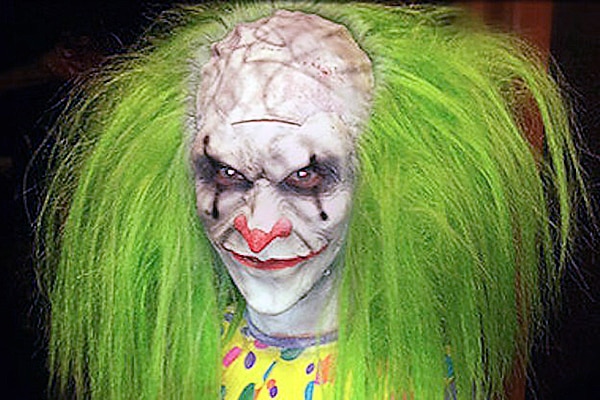
Audition by Doing
When you actually get into the audition itself, don’t have people come in, say their names, and tell you they want to be a werewolf or whatever. You have no idea whether they can be a werewolf. They have to audition by doing. Also, the audition brings up any challenges they may have with the job. If you’ve never been a haunt actor, you don’t know how hard it is. It’s harder than most people can imagine.
Having people audition by doing allows you to see whether they can hack it. Do they need to come in with prepared material, like a monologue, a story, or a joke? No, they don’t. Much better is to have a series of improvised games for them to do, and I’ll give you some examples shortly. See how they think on their feet, so to speak. That’s far more impactful than a prepared monologue—unless you’re doing a haunt that’s predominantly atmospheric, in which case you need a bunch of actory actors. In the Vault of Souls, for example, the audition process has been to have actors tell me a ghost story, because I want to see if people can tell a ghost story and convey it in a creepy and believable way.
If somebody has the right energy and the passion, you can tell that right off the bat when you’re watching them audition. If you somebody is good and has the right look, give them something to read or have them improvise something in front of you. For example, you can say, “I’d like you to cast an evil spell or a curse over everybody at the audition table,” and see what they do. If they come up with something that makes you feel uncomfortable and creepy, you should probably hire them.
The Four Things to Look for in an Audition
So, what do you look for when you’re watching people do their auditions? My criteria are really pretty simple. There are four things I look for in an audition. The first is their character development. Do they develop a character during the course of the exercise they’ve been given? Are they living in that character, or are they looking at the people next to them to see what they’re doing? I have a tendency to audition in groups, usually groups of 10, because I want to see how the actors work together as a team. Are they developing characters that work to enhance what the other people are bringing to the table, or are they trying to showboat and steal attention?
The audience connection is huge. Again, a haunted attraction isn’t like standard theater. There isn’t what’s called the fourth wall. Actors can see the audience. In fact, the audience is the missing character during the rehearsal process. The audience plays a character, so make certain the actors connect with whoever is watching them and with each other.
Are they able to startle and reset? For many years at Howl-O-Scream, we had to put a ton of guests through the houses every single night. We needed to make certain that everybody working there could scare and reset, scare and reset, scare and reset so every single guest got every single scare. Were we 100% successful? No, but I think we did better than most. It’s important to know if an actor has the ability to startle and reset—not startle and linger until somebody wants to punch them.
Finally, there’s the issue of stamina. If an actor is having trouble catching their breath by the end of your audition, chances are good they ain’t going to hang for a whole night, and they’ll definitely probably leave after the first weekend. So, make sure you look at those four things—character development, connection with the other people in the room, startle and reset, and stamina.
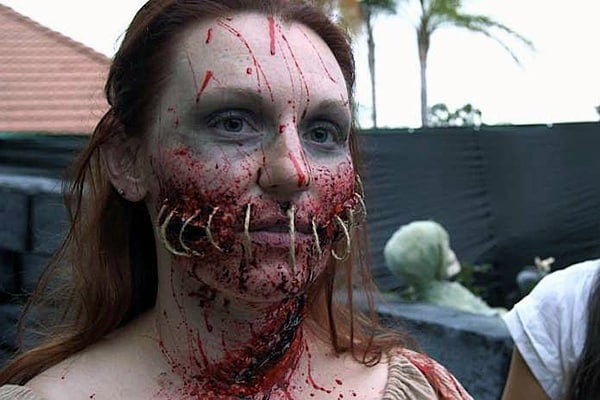
Games to Use at Auditions
What kind of games can you use to audition people? I call them games because, like I said, the audition should be fun. I start out my group of 10 with instructions about safety—they can’t do anything that will knowingly harm themselves or anyone around them, they can’t use any props to scare me, and they can’t touch anyone in the room. After that, I put them through some sort of physical activity. I’ll find an excuse for them to run or move back and forth from one side of the room to the other. As they’re doing that, I’ll have them change characters. For example, they’re in a creepy library and they’re picking up books from one side of the room, stacking them on a shelf on the other side of the room, going back to get books on the first side of the room, and they continue going back and forth. Or, they’re digging a grave on one side of the room and dumping the dirt on the other side. You can come up with any idea or plot device you want. As they do this, I call out different characters and see how quickly they adapt to those characters. I see if there are changes in the way they walk, their posture, the sounds they make. Hopefully, a transforming werewolf sounds different than an 18th-century vampire who sounds different than a victim being chased in the dark. My hope is they’ll be able to identify all three of those characters and play them clearly.
After they do that, I like to do something to test their ability to startle and reset. If you have the opportunity to have drop doors set up or have some of the scare locations from your houses, you can take small groups to a single room in your haunt and tell each person to find a location. Then you say, “I’m going to walk through the room, and I want you to scare me.” This is very practical. It’s scaring by doing. Walk through a few of times, because somebody may miss their opportunity the first time. If they miss it the second or third time, you might not want to hire them.
If I see somebody special, I’ll ask them to come out and do something as an individual. That doesn’t happy too often, because I know who the people are in my locale. Every now and then I’ll get somebody and think, “Where did they come from? They’re really good. Let’s hire them.”
So, that’s basically an audition that will work for pretty much anybody. You have it all written down here, so you can refer to it any time. If you do have any questions, you know how to contact me. I’ll add that information at the end of this blog, too.
Training Your Actors
Once you’ve got you’ve your actors cast, the next question is, how do you get them trained? Training is another form of compensation. Make sure you have people who know how to train them to do really good makeup. Your actors can assist with the costume construction—or, even more fun, the costume destruction. Get costume pieces and let them be part of the team that adds the dirt, the blood stains, the Great Stuff that looks like intestines flowing out. Give them that training, because it also gives them a great deal of ownership.
The most important thing, when it comes to training, is safety. It’s the thing nobody wants to make fun, but you need to, because it has to sink in. You need to find that balance between fun and importance, because safety is job one in any haunt, always. You have to reinforce that and drive it home. At the very least, with your safety training, have an evacuation plan and execute it. When you sound this buzzer, when this light goes off, when the audio goes out in the haunt, when all the house lights come on, practice what an evacuation looks like. Don’t just tell them, “Go out this door.” Say, “During tonight’s rehearsal, we’re going to do a practice evacuation,” and make sure you get everybody out.
It’s important to teach your actors how to do some sort of physical warm-up before going out and doing their job—stretching, calisthenics, whatever. Have them do some sort of cardio to get their heart rate up. Equally important is vocal warm-up, because we all know what actors’ voices sound like the day after opening. So, do some sort of vocal warm-up, do some sort of physical warm-up, and practice an evacuation plan. Also, make sure everyone knows where the fire extinguishers are. That’s very, very important. Safety can destroy everything you’ve tried so hard to do if you don’t do it right. So, make sure that works.
I’m just giving you the bare, bare minimum here about training. The Haunted Attraction Association has significantly better and more in-depth training, and you should definitely look into that.
During rehearsal, make sure you identify to your performers who’s atmosphere and who’s startle. Sometimes you have be as blatant as telling each one, “You’re here to create an atmosphere,” or “You’re here to create a distraction.” You can be more specific, like, “Don’t scream, just follow people in the queue. Reach out like you’re going to touch their hair or get really close to their ear and make them uncomfortable.” With startles, make sure you have them practice startling and resetting, startling and resetting, startling and resetting. My rule of thumb is that every fifth person in a conga-line style haunted house should be startled. So, it’s like, “BLAH!” two, three, four, five, “BLAH!” You can count that rhythm out if you want to.
Make sure your actors understand the story of the house—the beginning, middle, and end—and how they fit into that story. They need to know what happens before them and what happens after them. If they know the distraction or scare from the previous room and what’s coming up next, they can distract guests from that. Haunting is truly a team sport, so they have to know how they fit into the grand scheme of things. If you’re a haunt owner, a trainer, or an acting coach, you need to know that better than they do, so you can help them find it.
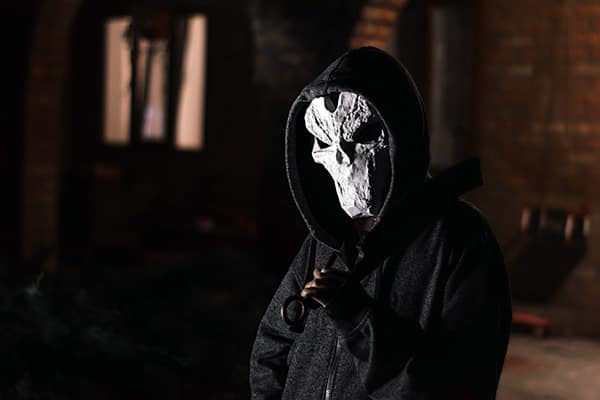
Teach Your Actors to Read Guests
Work with your actors to help them figure out how to read guests and train them to do this. If you scare certain folks, they’ll hurt you, and my recommendation is, don’t poke that bear. If you scare other folks, it will make the rest of the group laugh. The guy that’s so nervous he’s holding his girlfriend in front of him and trying to give the impression she’s the scared one—if you can scare him, the whole group has that sense of instant karma immediately, and that’s a lot of fun.
Also, train your actors to identify which guests have had a little bit too much to drink or their personality has been altered by some other chemical. Oh, and kids. Invariably, no matter what you tell people about the recommended age group for your haunt, some people will bring a three-year-old that gets terrified. Some three-year-olds will think it’s all very funny, but others will just be absolutely mortified. We’re out to entertain, not to traumatize. If you can give that child the power to scare you, you’ll provide them with a whole new level of confidence. So, make sure your performers understand that different guests need to be handled in different ways.
Retaining Your Actors by Catching Them Doing Things Right
We’ve got the actors cast, we’ve got them trained, and now we go into maintaining their performance. I truly believe that any performance experience needs to end as strong or stronger than it started, and that’s tough. Most haunted attractions run at least 10 nights, and some run 50 nights. Maintaining the performance throughout that time is really, really challenging. The biggest tool you have is observation. If you’re an owner and you can pull yourself away to walk through your haunted attraction at least three times a night—not always at the same time—that’s the best way to learn what’s going on. You can see how your actors are doing at scaring. Don’t see how they’re scaring you. See how they’re scaring the people in front of you and the people behind you. Catch them doing things right. If you catch things being done right, you’ll train people to do things right. If you try to catch people doing things wrong, all you’ll train them to do is avoid being caught. If you go through and make 20 notes on your actors, at least 10 of them need to be, “That was great!” The other 10 can be things like, “You were too slow on your reset,” or, “What the hell happened to your makeup? Why are you a clown? That doesn’t fit.” If you catch them doing things wrong, tell them why they’re wrong, in private, and then offer them an alternative—“The way you did it isn’t right, but maybe you can try this instead.”
It’s important to reward good behavior publicly and redirect privately. Share the 10 “That was great!” notes in front of the cast. If you need to redirect somebody, don’t say, “Can I talk to you privately,” because everybody knows what that’s about. Find a casual way to talk to that person privately. This builds morale and doesn’t embarrass your cast. I’ve had cast members who did something really stupid and then I did something really stupid by making a big deal out of it in front of the rest of the cast. Those actors were so embarrassed they didn’t come back the next night. To retain and maintain the quality of performance throughout the entire run, you need to make sure you praise publicly and redirect privately.
Praise can take the form of swag or other materials you use to promote the event, like the “I Scared Scott” buttons I mentioned earlier. There’s a company online called One Inch Round that sells one-inch round pins—and other sizes as well—in large quantities for very little money per pin. That’s a great way to provide actors with a brag tag of, “I did good!”
Don’t forget to maintain your expectations to the end. As I said at the beginning of this blog, if you’re actors are great, it reflects well on you. If your actors aren’t great, it reflects poorly on you. You need to maintain your expectations all the way through the run. If you’re able to do that, you’ll be able to clearly communicate to your cast what’s good, what’s not, what you like, and what you don’t like. For years, I’ve used the phrase—“Start, stop, continue.” Train your cast to start doing things they’re not doing that they should be, stop doing things they shouldn’t be, and continue doing things that are right. If you train them in this way from the beginning, that “continue” category will be the biggest.
I’ll be doing more episodes on actors. Somebody asked, “How do you train actors to do predominantly atmospheric or environmental pieces?” so I hope to get into that in another episode and blog. If you’d like to ask questions, suggest topics, or make comments on what I’ve said or written on any podcast or blog, please go to our Facebook group, go to AScottInTheDark.com or my website, or email me at [email protected]. Until next time, rest in peace.

